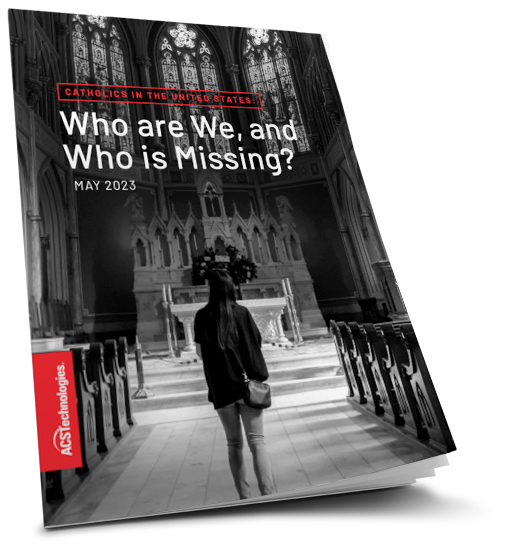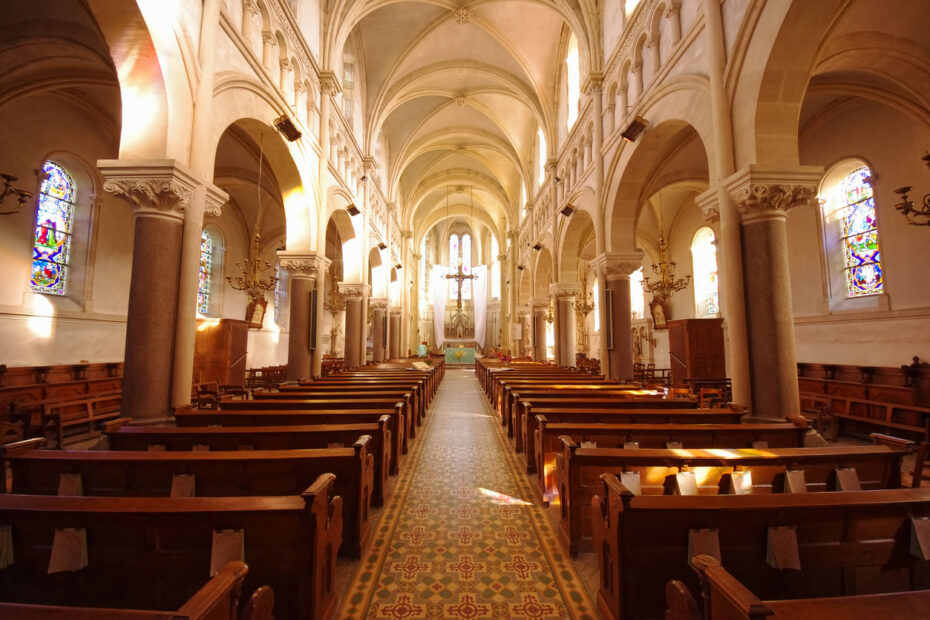Who are the people who identify as active Catholics in the U.S.? What are their demographics? Their lifestyles? Their concerns? Who might be the people to help the Catholic church engage more people in participation? In the study, “Who are we, and who is missing: Catholics in the US,” I worked with researchers to examine a sample of the 34 Million people who self-identify as active Catholics. We determined the lifestyles of the largest percentages of active Catholics and the smallest percentages of active Catholics. By understanding who we are and who is missing, we can strengthen our ministry and focus our outreach efforts. We can use this information and the energy of the National Eucharistic revival to prepare us to begin a growth process.
During this time of Eucharistic Revival, we have been focused on diocesan renewal and are now entering a phase of parish renewal to “rekindle” our personal relationship with Jesus Christ in the Holy Eucharist. This national effort is already bearing fruit at parishes as we fully learn what it means to participate in the Mass. With the grace of the Holy Spirit, I pray that the enkindled fire of our faith leads us to personal action as an outcome from the revival – to truly live the Great Commission, to go outward as missionary disciples to proclaim the message of love of Christ to others.
“So, being affectionately desirous of you, we were determined to share with you not only the gospel of God but our very selves as well, so dearly beloved had you become to us.”
1 Thessalonians 2:8
Relationships
By restoring our personal relationship with Jesus Christ in the Eucharist, we invite the Holy Spirit to enable us to reflect this to others through our encounters, our earnest friendship, and caring. The Fellowship of Catholic University Students (FOCUS) teaches this as part of their “Win, Build, Send” model – “Our prayer, our example of life, our genuine friendship with the person we are forming all contribute to leading souls closer to Christ. More important than any faith formation program, resource, or study is the living witness of faithful Christians.”
To accomplish a renewal of the Catholic church in the US, we must be an example to others that compels them to be part of our Catholic community. This is overwhelming to consider because of the sheer breadth of possibilities. And we know that the personal journey to even a sense of belonging in the Catholic community can be challenging. We must then accompany these seekers fully into the U.S. Catholic Church. Where to start?
First, who are the people most likely to be active Catholics? We can focus our engagement and missionary discipleship to strengthen our presence within these groups. The most likely Catholics are part of four lifestyle segments, largely Hispanic or multicultural families, plus one suburban group.
Second, we have seen trends for decades indicating the large number of Catholics who have stopped attending Mass or have left the church. This is a very large group of people with some affinity to the Catholic faith. We can look to lifestyle segments to gain some insight into where we might start.
Lifestyle Segments
There are three lifestyle segments that are present as “active Catholics.” But are very low percentages of the active Catholic population. The people in these lifestyle segments are good potential to invite into a relationship with the Catholic church. Some of them are already active in the Catholic church.
These groups of people are civic-minded wealthy suburban, traditional rural eastern US, or upscale Gen X families. They are more highly present in the US population than they are on our active Catholic registers.
Most of the segments are families with children ranging from infant to young adult, yet the children are not active in the church. Part of the challenge is the mixed or poor experience people have when they decide to return to the church community. Based on responses to the ACST American Beliefs study, Catholic respondents tell us that the thing they look for first in a parish is “warm and friendly encounters,” and the reason they leave or stay away is because “religious people are too judgemental,” and “they do not trust organized religion.”
Step Back
Another important step for our parish leaders and parishioners is to place ourselves as visitors who have not been to church in a number of months or years. What is the experience? Will you be able to follow up with them? What is your process for invitation and follow-up? What events do you have that allow people to “ease” into the parish community? A parish family that places priority on intentional welcome, hospitality, and engagement can begin to restore confidence and trust.
Now is the time to think about what we do with the restorative energy of the Eucharistic revival. Time will tell if our parishes can use this as a catalyst, both for parishioner engagement and growth through missionary discipleship. Find more about our Catholic landscape in the study Who are we, and who is missing: Catholics in the U.S.

Who are We, and Who is Missing?
How do we reach out and engage Catholics who aren’t active?
This Catholic Report is based on 34.3 million active Catholics in the U.S. It broadly looks at Catholics across the United States and provides directional information for church leadership. It gives leaders insights into the people in the parish and the surrounding community. Their interests and lifestyles, and shows how to use this information for personal interaction.
Terry is a multi-disciplined executive passionate about serving the Church by supporting his leaders and organizations. His experience includes coaching and training Catholic leaders. Facilitating priority planning with dioceses and parishes and consulting with parish leaders to engage parishioners. And using technology to foster stewardship. Terry is chairman of the finance council for his home parish in Hartsville, SC. And a cantor for his parish in Myrtle Beach.



